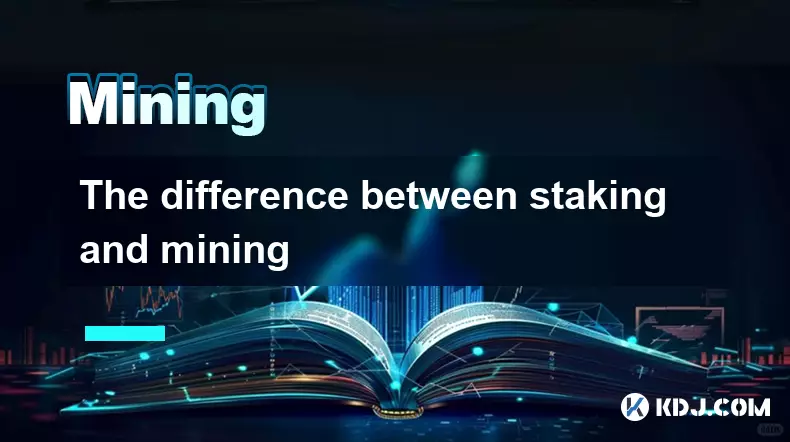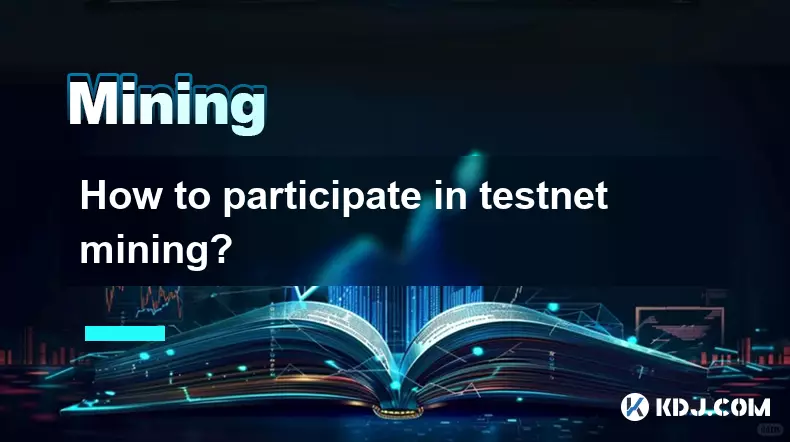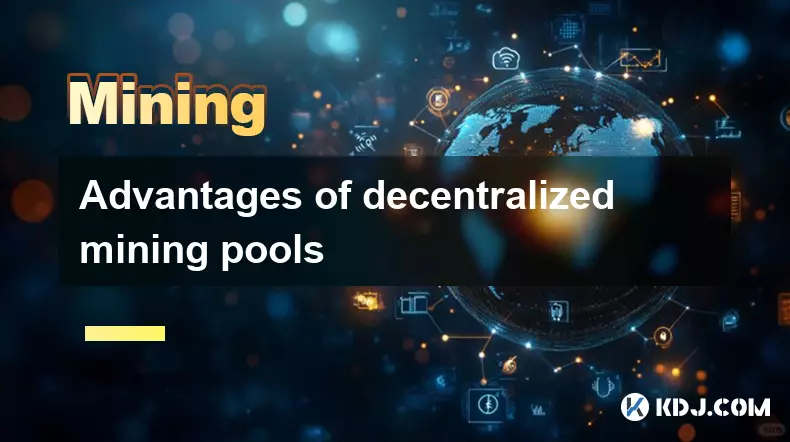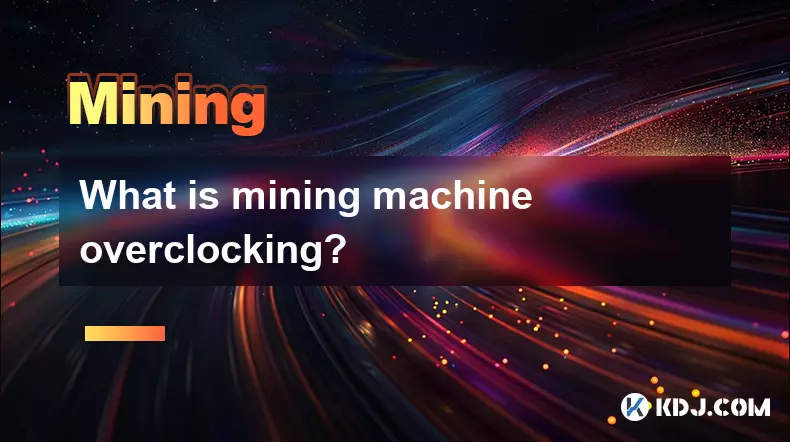-
 bitcoin
bitcoin $122025.899241 USD
-2.12% -
 ethereum
ethereum $4488.068729 USD
-4.11% -
 bnb
bnb $1315.348019 USD
8.65% -
 tether
tether $1.000457 USD
0.03% -
 xrp
xrp $2.875326 USD
-3.69% -
 solana
solana $222.043604 USD
-4.07% -
 usd-coin
usd-coin $0.999682 USD
0.00% -
 dogecoin
dogecoin $0.249887 USD
-5.62% -
 tron
tron $0.337379 USD
-2.59% -
 cardano
cardano $0.827763 USD
-5.06% -
 hyperliquid
hyperliquid $45.774531 USD
-2.43% -
 chainlink
chainlink $22.079309 USD
-5.87% -
 ethena-usde
ethena-usde $1.000156 USD
0.02% -
 sui
sui $3.482566 USD
-3.57% -
 stellar
stellar $0.386982 USD
-4.92%
What skills do you need for Bitcoin mining?
Bitcoin mining requires ASIC hardware, technical setup, and ongoing maintenance to efficiently solve cryptographic puzzles and earn rewards.
Jul 25, 2025 at 04:35 am

Understanding the Basics of Bitcoin Mining
Bitcoin mining is a process that involves validating transactions and adding them to the blockchain ledger. Miners use powerful computers to solve complex cryptographic puzzles, and the first to solve the puzzle gets to add a new block to the blockchain and is rewarded with newly minted Bitcoin. This process is known as proof-of-work. To participate effectively, individuals must understand how the blockchain functions, how mining difficulty adjusts, and how network consensus is maintained. Without a foundational grasp of these concepts, it becomes difficult to troubleshoot issues or optimize mining performance.
Technical Hardware Knowledge
Bitcoin mining relies heavily on specialized hardware known as ASICs (Application-Specific Integrated Circuits). Unlike general-purpose CPUs or GPUs, ASICs are designed solely for mining Bitcoin and offer vastly superior efficiency. A miner must know how to select the right model based on hash rate (measured in TH/s) and power consumption (measured in watts per TH). Setting up the hardware involves proper ventilation, power supply units rated for high continuous load, and secure mounting to prevent overheating. It’s essential to monitor firmware updates provided by manufacturers, as these can improve efficiency or fix security flaws. Connecting the ASIC to a stable internet connection via Ethernet ensures consistent communication with the mining pool.
- Ensure the mining rig is placed in a well-ventilated area
- Use a surge protector and dedicated circuit to avoid electrical hazards
- Regularly clean dust filters and check for fan functionality
- Update firmware through the manufacturer’s official portal
Networking and Internet Configuration
A stable and low-latency internet connection is critical for effective mining. Delays in receiving new block information can result in wasted computational effort. Miners must configure their network settings to prioritize mining traffic. This includes setting up static IP addresses for mining devices to ensure they remain accessible and can be monitored remotely. Port forwarding may be required to allow external access to the miner’s web interface. Using a wired Ethernet connection instead of Wi-Fi reduces latency and packet loss. Some advanced users configure VLANs or use dedicated routers to isolate mining traffic from personal devices, improving both security and performance.
- Assign a static IP to each ASIC through the router’s DHCP reservation
- Forward port 8332 (or the miner’s designated port) to the ASIC’s IP
- Disable unnecessary services on the miner’s network to reduce interference
- Monitor ping times to mining pool servers and select the closest one
Software and Mining Pool Setup
After hardware installation, miners must configure mining software to connect to a mining pool. Popular pools include Slush Pool, F2Pool, and Poolin. Each pool provides unique stratum URLs and port numbers. The miner inputs these details into the ASIC’s configuration page, along with their Bitcoin wallet address and worker name. This worker name helps identify individual machines within the pool. Most ASICs run lightweight Linux-based firmware that allows configuration via a web browser. It’s crucial to verify that the miner successfully connects and begins submitting shares. Shares are proof that the device is contributing computational power to the pool’s efforts.
- Access the ASIC’s web interface by entering its IP into a browser
- Enter the stratum server address, port, wallet address, and worker name
- Save settings and reboot the miner to apply changes
- Check the pool dashboard to confirm incoming shares and hash rate
Energy Management and Cost Analysis
Electricity cost is the largest ongoing expense in Bitcoin mining. Miners must calculate their break-even point by comparing the hash rate of their equipment with local electricity rates. For example, an ASIC with a power draw of 3,250 watts running 24/7 at $0.10 per kWh will consume approximately $70 per month in electricity alone. Efficiency is measured in joules per terahash (J/TH), and lower values indicate better performance. Some miners install smart meters to track real-time power usage. Others negotiate with utility providers for industrial rates or explore locations with cheaper renewable energy. Overheating increases power consumption and reduces hardware lifespan, making thermal management a financial concern as well as a technical one.
- Use a power meter like the Kill A Watt to measure actual consumption
- Calculate daily kWh usage: (watts / 1000) × 24 hours
- Multiply by local rate to estimate monthly cost
- Compare earnings from the pool against electricity expenses
Troubleshooting and Maintenance Skills
Mining hardware operates under constant stress, making regular maintenance essential. Common issues include hash board failures, network disconnections, and overheating. Miners should learn to interpret error codes displayed on the ASIC’s interface. For example, a 'Low Hash Rate' warning may indicate a failing board or unstable power supply. Replacing hash boards requires anti-static precautions and basic soldering skills in some models. Remote monitoring tools like Awesome Miner or custom scripts can send alerts when performance drops. Keeping a log of uptime, temperature, and rejected shares helps identify patterns and preempt failures.
- Inspect event logs on the ASIC’s dashboard daily
- Replace thermal paste on hash boards every 6–12 months
- Keep spare power supplies and Ethernet cables on hand
- Join mining forums to diagnose uncommon error codes
Frequently Asked Questions
Can I mine Bitcoin using my home computer?No, modern Bitcoin mining requires ASIC miners due to the high difficulty level. Consumer CPUs and GPUs are no longer competitive and will consume more electricity than they earn in Bitcoin rewards.
Do I need a Bitcoin wallet to start mining?Yes, you must have a Bitcoin wallet address to receive payouts from the mining pool. This can be a software wallet, hardware wallet, or hosted wallet, but it must support receiving Bitcoin (BTC) on the native network.
Is it necessary to join a mining pool?While solo mining is technically possible, the probability of solving a block individually is extremely low. Joining a mining pool combines your hash power with others, increasing the frequency of rewards, albeit shared among participants.
How do I know if my miner is working correctly?Log in to your mining pool account and check if your worker is reporting an active hash rate and submitting accepted shares. Also, verify that the ASIC’s local interface shows stable temperatures and no error messages.
Disclaimer:info@kdj.com
The information provided is not trading advice. kdj.com does not assume any responsibility for any investments made based on the information provided in this article. Cryptocurrencies are highly volatile and it is highly recommended that you invest with caution after thorough research!
If you believe that the content used on this website infringes your copyright, please contact us immediately (info@kdj.com) and we will delete it promptly.
- BlockDAG, DOGE, HYPE Sponsorship: Crypto Trends Shaping 2025
- 2025-10-01 00:25:13
- Deutsche Börse and Circle: A StableCoin Adoption Powerhouse in Europe
- 2025-10-01 00:25:13
- BlockDAG's Presale Buzz: Is It the Crypto to Watch in October 2025?
- 2025-10-01 00:30:13
- Bitcoin, Crypto, and IQ: When Genius Meets Digital Gold?
- 2025-10-01 00:30:13
- Stablecoins, American Innovation, and Wallet Tokens: The Next Frontier
- 2025-10-01 00:35:12
- NBU, Coins, and Crypto in Ukraine: A New Yorker's Take
- 2025-10-01 00:45:14
Related knowledge

The difference between staking and mining
Sep 24,2025 at 05:18am
Understanding Staking in the Cryptocurrency Ecosystem1. Staking involves holding funds in a cryptocurrency wallet to support the operations of a block...

How to participate in testnet mining?
Sep 22,2025 at 09:18am
Understanding Testnet Mining in the Crypto Ecosystem1. Testnet mining is a method used by blockchain developers to simulate real-world conditions on a...

How to dispose of abandoned mining machines?
Sep 19,2025 at 08:19pm
Assessing the Condition of Abandoned Mining Rigs1. Begin by inspecting each mining machine for visible damage, corrosion, or missing components. Machi...

How to identify high-quality mining pools?
Sep 21,2025 at 03:19pm
Reputation and Track Record1. A mining pool’s reputation is built over time through consistent performance and transparency. Pools that have operated ...

Advantages of decentralized mining pools
Sep 20,2025 at 04:36pm
Enhanced Security and Resistance to Censorship1. Decentralized mining pools operate on blockchain-based smart contracts, eliminating the need for a ce...

What is mining machine overclocking?
Sep 21,2025 at 07:19pm
Understanding Mining Machine Overclocking1. Mining machine overclocking refers to the process of increasing the operating frequency of a cryptocurrenc...

The difference between staking and mining
Sep 24,2025 at 05:18am
Understanding Staking in the Cryptocurrency Ecosystem1. Staking involves holding funds in a cryptocurrency wallet to support the operations of a block...

How to participate in testnet mining?
Sep 22,2025 at 09:18am
Understanding Testnet Mining in the Crypto Ecosystem1. Testnet mining is a method used by blockchain developers to simulate real-world conditions on a...

How to dispose of abandoned mining machines?
Sep 19,2025 at 08:19pm
Assessing the Condition of Abandoned Mining Rigs1. Begin by inspecting each mining machine for visible damage, corrosion, or missing components. Machi...

How to identify high-quality mining pools?
Sep 21,2025 at 03:19pm
Reputation and Track Record1. A mining pool’s reputation is built over time through consistent performance and transparency. Pools that have operated ...

Advantages of decentralized mining pools
Sep 20,2025 at 04:36pm
Enhanced Security and Resistance to Censorship1. Decentralized mining pools operate on blockchain-based smart contracts, eliminating the need for a ce...

What is mining machine overclocking?
Sep 21,2025 at 07:19pm
Understanding Mining Machine Overclocking1. Mining machine overclocking refers to the process of increasing the operating frequency of a cryptocurrenc...
See all articles










































































